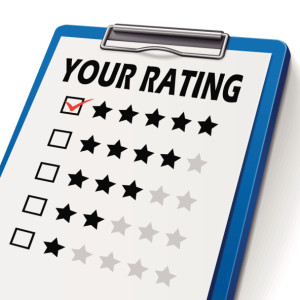 Are you frustrated by trying to get your finance people or other senior executives to understand the value of measuring and building employee engagement? If so, you are not alone. I’ve talked to thousands of managers and HR people who are at their wits end trying to justify the cost on such initiatives. Sometimes, people in the finance function are quick to question the cost of “that soft and fuzzy people stuff.” (I am allowed to say this because I spent a large part of my career in finance).
Are you frustrated by trying to get your finance people or other senior executives to understand the value of measuring and building employee engagement? If so, you are not alone. I’ve talked to thousands of managers and HR people who are at their wits end trying to justify the cost on such initiatives. Sometimes, people in the finance function are quick to question the cost of “that soft and fuzzy people stuff.” (I am allowed to say this because I spent a large part of my career in finance).
I have compiled some great fodder for enlightening the naysayers and turning them into passionate believers in the value of employee engagement.
PREMIUM CONTENT: 2015 US Internal Employee Compensation Estimator
The Best-in-class or most Engaged Organizations (regularly defined as the top 10%) garner the following awesome business and financial outcomes compared to those organizations with average levels of Employee Engagement:
- 20 times more innovation and creativity – In addition, 59% of engaged employees report that their job brings out their best creativity, compared with only 3% for the disengaged employees. Needless to say, this heightened out-of-the-box thinking pays huge dividends in “creative” and “design” type job functions and industries.
- 44% higher retention
- 37% higher sales
- 125% less burnout/job stress. (Job stress/workload/lack of work life balance are the number one reason people contemplate resigning from their jobs.)
- 66% lower absenteeism and absenteeism costs the average North American employer $3,600 per hourly employee, and $2,650 per salaried employee, per year.
- 51% Less Turnover6 Side notes: Turnover costs the American economy over $300 Billion dollars each year. Replacement costs for an employee resignation run anywhere from one to two years base salary for that position.
- 53% of the actively disengaged are content to continue to cash their paychecks as opposed to begin to look for new employment; these are commonly referred to as the “quit and stay” employees.
- Communication is five times more likely to be seen as a positive by the employees
- Higher volunteerism by employees leading to 31% higher productivity
- Much better safety compliance and thus, fewer workplace accidents. Engaged business units have 62% less safety incidents tan their unengaged counterparts
- Significantly lower instances of employee theft or what the retail industry commonly calls “shrinkage.” Companies above the 50th percentile on employee engagement versus those in the bottom half experienced a 123% higher success rate in eliminating this theft.
- Engaged employees are linked to engaged customers at a very high correlation coefficient of .85
One of the most meaningful metrics is specific to the healthcare industry. Sadly, in America, you are five times more likely to die of a hospital-born infection than you are a homicide.13 Why are so many infections creating these needless deaths? The primary reason is the lack of proper hand washing by caregivers. Thus, knowing that there is a near-perfect correlation between Employee Engagement and Hand Washing Compliance (a .99 correlation coefficient according to HR Solutions), increasing engagement actually saves lives!
Increasing Employee Engagement also increases ethical behavior. In fact, the two topics are highly correlated at a .73 coefficient. One can only wonder how unengaged GM’s engineers were when they decided that $1 per car was too costly to fix the faulty ignition switch that was ultimately linked to the pointless deaths of at least 57 people. The same Hay/ERC study also reported that engaged employees were much more likely to report misconduct than their unengaged and disengaged coworkers. A review of the internal memos at GM clearly showed that although many employees noticed the switch problem that could cut off engines and disable airbags, power steering and power brakes, the company failed to recall 2.6 million cars until more than one decade later. In this case, a culture of Ambivalence and Disengagement tragically cost 13 lives, or maybe more.
Lastly, if you are attempting to sell an employee engagement initiative or survey to a CFO or other executive who only cares about “the bottom line,” share this metric:
“Best-in-class organizations are 350% more profitable than organizations with average levels of employee engagement levels.”
The American author/speaker Zig Ziglar once said, “Profitability comes from loyalty, productivity, and having a character base from which to work.” My hope is that your leaders aspire to build a character base that puts the human back into human capital and genuinely value employees over money. As my Grandmother Rita said to me many times growing up, “One hand washes the other.” So true.
MORE: Best Staffing Firms to Work For








